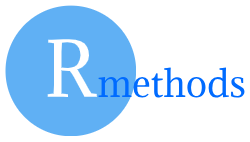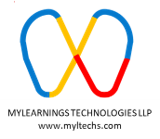Module 1: Introduction to PowerBI
- Introduction to Business Intelligence (BI)
- Overview of Self-Service BI (SSBI)
- Introduction to PowerBI
- Comparative Analysis:
- Traditional BI vs. PowerBI
- PowerBI vs. Tableau vs. QlikView
- Use Cases of PowerBI
- Basic Components of PowerBI
Hands-On: Installation and Setup of PowerBI Desktop.
Module 2: Getting Started with PowerBI Desktop
- Connecting to Data Sources
- Loading Data into PowerBI Desktop
- Understanding Different Views in PowerBI Desktop
- Introduction to Power Query Editor & M language
- Data Transformation Techniques:
- Cleaning, Shaping, and Modeling Data
- Managing Data Relationships:
- Creating and Editing Relationships
- Cross-Filter Direction
Skills You Will Learn: Data transformation, data modeling, managing relationships.
Hands-On: Loading and transforming data, creating relationships.
Module 3: Data Analysis with DAX (Data Analysis Expressions)
- Introduction to DAX
- Understanding Data Types in DAX
- DAX Calculation Types:
- Calculated Columns
- Measures
- DAX Syntax and Functions:
- Common DAX Functions
- DAX Operators and Tables
- Filtering Data with DAX
Skills You Will Learn: Creating and using DAX expressions, performing data analysis.
Hands-On: Creating calculated columns and measures using DAX.
Module 4: Data Visualization Techniques
- Introduction to Visuals in PowerBI
- Creating Basic Visuals:
- Charts, Tables, and Matrices
- Using Slicers and Filters
- Advanced Visuals:
- Maps, Gauges, and Single Number Cards
- Custom Visuals and Formatting
- Enhancing Visuals:
- Bookmarks and Selection Pane
- KPI Visuals
- Shapes, Text Boxes, and Images
Skills You Will Learn: Creating and customizing visuals, using advanced techniques.
Hands-On: Creating various types of visuals and customizing them.
Module 5: PowerBI Service
- Introduction to PowerBI Service
- Creating and Publishing Reports and Dashboards
- Configuring and Managing Dashboards
- Using PowerBI Q&A and Quick Insights
- PowerBI Embedded and Collaboration
- Bookmarks and Buttons
Skills You Will Learn: Using PowerBI Service for report and dashboard management.
Hands-On: Publish reports to PowerBI Service, create and configure dashboards.
Module 6: Advanced Data Connectivity
- Data Sources Supported in PowerBI
- Connecting to Various Data Sources:
- Connect to CSV, Excel, pdf, json and Text files.
- Connect to databases like MySQL, SQL Server (on-premise or local).
- Public data sources such as Web APIs or OData feeds.
- Connecting to SQL Databases:
- Demonstrating MySQL connectivity.
- Using ODBC connections or installing the MySQL connector.
- Creating queries to fetch data and automate imports.
- Building Pipelines with Free Tools:
- Demonstrating simple pipelines for importing and transforming data with Power Query.
Skills You Will Learn: Connecting PowerBI to different data sources, understanding connectivity modes.
Hands-On: Set up MySQL, connect to PowerBI Desktop & load data for reporting.
Module 7: Real-World Applications and Best Practices
- Industry-Specific KPIs and Metrics:
- Sales, Manufacturing, Finance
- Implementing Advanced Analytics:
- Time Intelligence, Pareto Analysis
- Forecasting, What-If Analysis
- AI Capabilities in PowerBI
- Integration with Python and R
Skills You Will Learn: Applying PowerBI in real-world scenarios, advanced analytics techniques.
Hands-On: Implement industry-based use cases and best practices.
Module 8: Enhancing Reports with Advanced Techniques
- Create interactive reports with advanced formatting and export them as PDF.
- Advanced Formatting Techniques:
- Fine-tuning visuals with themes.
- Conditional formatting for tables and charts.
- Using Parameters:
- Creating dynamic reports with “What-If” analysis.
- Advanced Drill-Downs:
- Hierarchies and custom drill-down paths.
- Interactive Report Techniques:
- Adding buttons, bookmarks, and page navigations.
- Exporting Reports:
- Publishing to PDF or sharing reports offline.
Skills You Will Learn: Advanced reporting techniques, dynamic visualization, and offline sharing.
Hands-On: Create interactive reports with advanced formatting and export them as PDF.
Module 9: Integration with Advanced Tools
- Integrating R & Python with PowerBI
- Creating and Using R Scripts
- Creating and Using Python Scripts
- Advanced Analytics with R & Python
Skills You Will Learn: Using R and Python scripts in PowerBI, performing advanced data analysis.
Hands-On: Perform data analysis using R and Python within PowerBI.
Module 10: Final Project and Evaluation
- Capstone Project:
- Applying All Learned Concepts
- Creating Comprehensive Reports and Dashboards
- Presentation and Feedback
Skills You Will Learn: End-to-end PowerBI project implementation, presenting insights.
Hands-On: Complete a capstone project involving data extraction, transformation, modeling, analysis, and visualization.
Value-Added Topics for PL-300 Certification Preparation
- Understanding the Microsoft Certification Process
- PL-300 Exam Objectives and Structure
- Key Topics for PL-300 Exam:
- Data Preparation
- Data Modeling
- Data Visualization
- Data Analysis
- Deployment and Maintenance
Message Copilot

